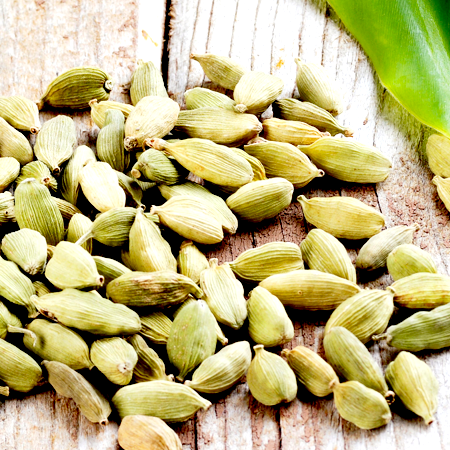

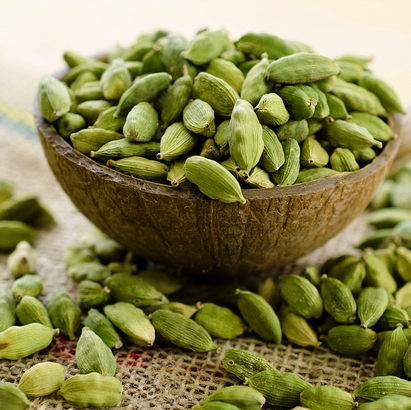
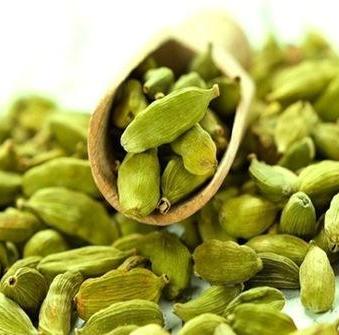
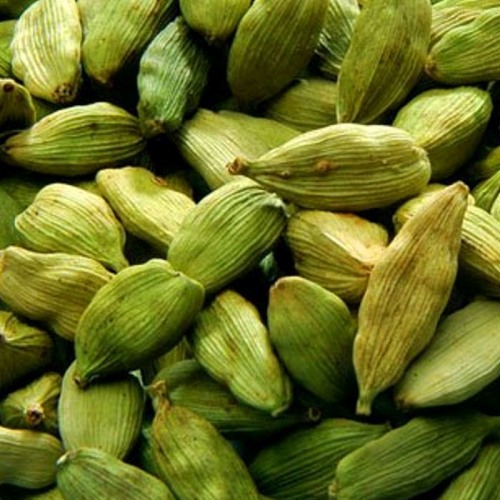
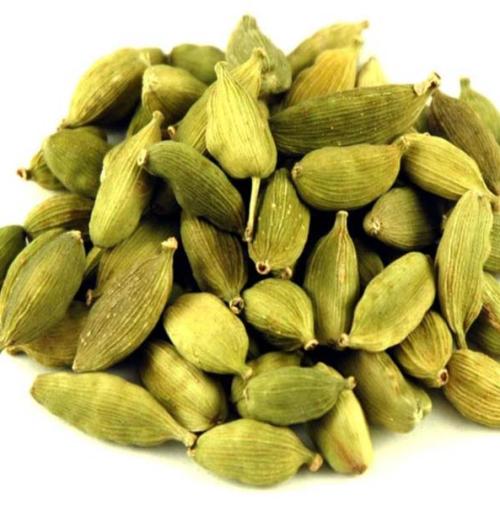
Botanical name Elettaria cardamomum L.
Family Zingiberaceae
Source Seeds
Origin Sri Lanka
Description / Color / Consistency A light, colourless to very pale yellow liquid..
Aromatic Summary / Note / Strength of Aroma A top note with a strong aroma, Cardamom Essential Oil is sweet, spicy and almost balsamic in fragrance.
Blends With Rose, Orange, Bergamot, Cinnamon Bark, Clove Bud, Caraway, and Cedar wood.
Product Abstract
A perennial, reed-like herb, Cardamom grows wild and is cultivated in India and Sri Lanka. It grows up to 4 meters (13 feet) and has long, green silky blades, small yellowy flowers, with a violet tip and a large fleshy rhizome, similar to ginger. Oblong gray fruits follow the flowers, each containing many seeds. Cardamom was well known in ancient times. The Egyptians used it in perfumes and incense, and the Arabs used it ground in their coffee. The seeds are an important ingredient in Middle Eastern and Asian cooking.
Cardamom of commerce is the dried ripe fruit (capsules of cardamom plant) often referred as the “Queen of Spices” because of its very pleasant aroma and taste. Cardamom is a perennial, herbaceous, rhizomatous plant. Based on the nature of panicles, three varieties are recognized viz. Malabar with prostrate panicle, Mysore with erect panicle, and Vazhukka with semi erect panicle
History
The use of cardamom dates back to at least 4,000 years. Considered one of the world’s oldest spices, it was used in ancient Egypt for its medicinal properties – and even as a part of rituals and embalming. And the Romans and Greeks used this spice for its pungent aroma. The Vikings discovered it during their travels and brought it back to Scandinavia.
Common Usage
Cures cough and cold
Aids digestion
Prevents bad breath
Secret to longevity
Helps Fight Depression
Fights Asthma
Aids In Diabetes Treatment
Lowers Blood Pressure Levels
Anti-spasmodic and Anti-inflammatory Properties
Dental Diseases
Improves Blood Circulation
Treats Nausea, Sore Throats, and Vomiting
Cautions
There are no inherent dangers to Cardamom essential oil, except in some rare cases of irritation when a highly concentrated form was applied to the skin.
Main Constituents
1,8-Cineole 33.3%
Terpinyl acetate 36.86%
Refractive index 1.462 - 1.466 20Cº 1.4625
Specific gravity 0.917 - 0.947 - 20 Cº +30.25º
Optical rotation +22.0º to +44.0 20Cº 1.4625
Protein 7-14%
Carbohydrate 42.1%
Crude fibre 6.7-12.8%
Starch 39.0-49.9%
Volatile oil 7.4%
Calcium 0.3%
Iron 0.012%
Phosphorus 0.21%